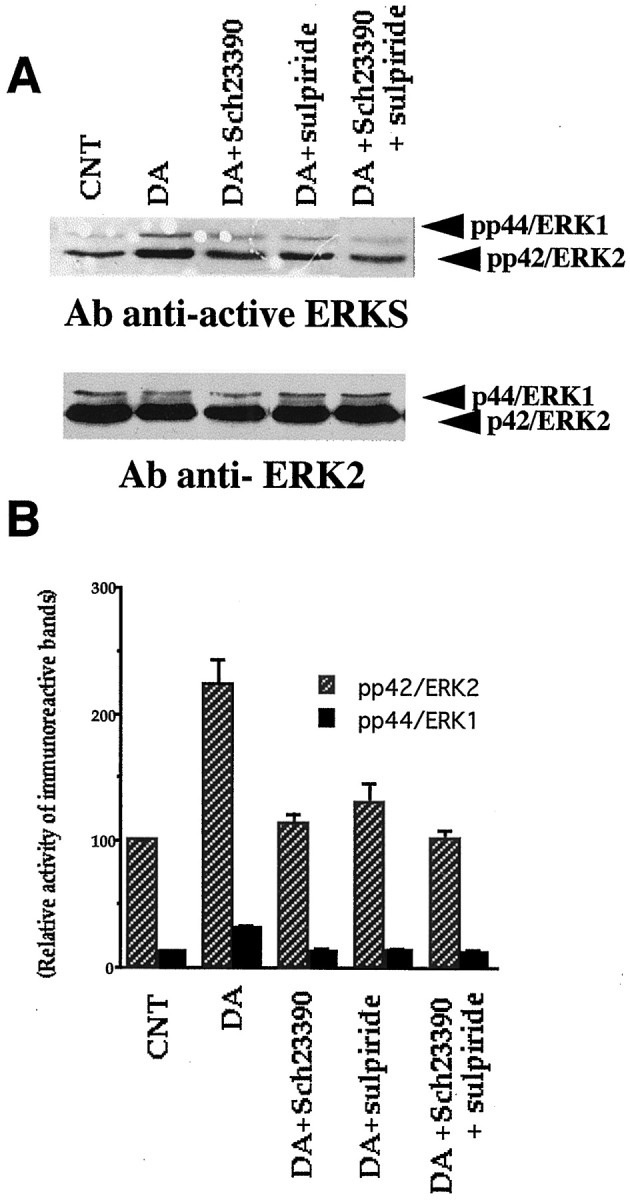Fig. 12.

Dopamine D1 and D2 receptors synergistically activate MAP-Ks as detected with anti-active MAP-K antibody. Methods are similar to those depicted in Figure 11 except the use of D1 antagonist SCH23390 (1 μm) and D2 antagonist sulpiride (50 μm). These antagonists were preincubated for 10 min before dopamine (100 μm) was applied. In all results in the figure, the duration of dopamine application was 2 min, but similar results were obtained after 5 min application. A, Phosphorylation bands of ERK1 and ERK2 after various conditions. Control tissue showed a relatively dense band of ERK2 as in Figure 11and also a light ERK1 band in this case. Dopamine increased phosphorylation of both ERK1 and ERK2. Note that phosphorylation bands are lighter in the presence of SCH23390 or sulpiride, and the band in the presence of two antagonists is at control level. B, Synergism between D1 and D2 receptors revealed by quantification by scanning densitometry of the autoradiogram of anti-active ERKs using NIH Image 1.6. Each group contains four observations. Dopamine increased ERK1 and ERK2 phosphorylation more than twofold (ERK1,p < 0.001; ERK2, p < 0.005). This dopamine effect was highly significantly reduced by the presence of the D1 antagonist SCH23390 (ERK1, p < 0.002; ERK2, p < 0.001) or the D2 antagonist sulpiride (ERK1, p < 0.002; ERK2, p < 0.05). Co-presence of SCH23390 and sulpiride blocked dopamine phosphorylation of MAP-Ks (ERK1 and ERK2, p < 0.001). These results suggest that sole activation of either D1 or D2 receptors by dopamine is insufficient to bring about activation of MAP-Ks. Two subtypes of dopamine receptors must be stimulated for MAP-K activation. The graph is plotted as percentage changes relative to CNT levels for both p42/ERK2 and p44/ERK1. For this purpose, control was taken as 100 for ERK2 and 12.5 for ERK1, to reflect roughly the ERK2/ERK1 densitometry proportion obtained by scanning.
